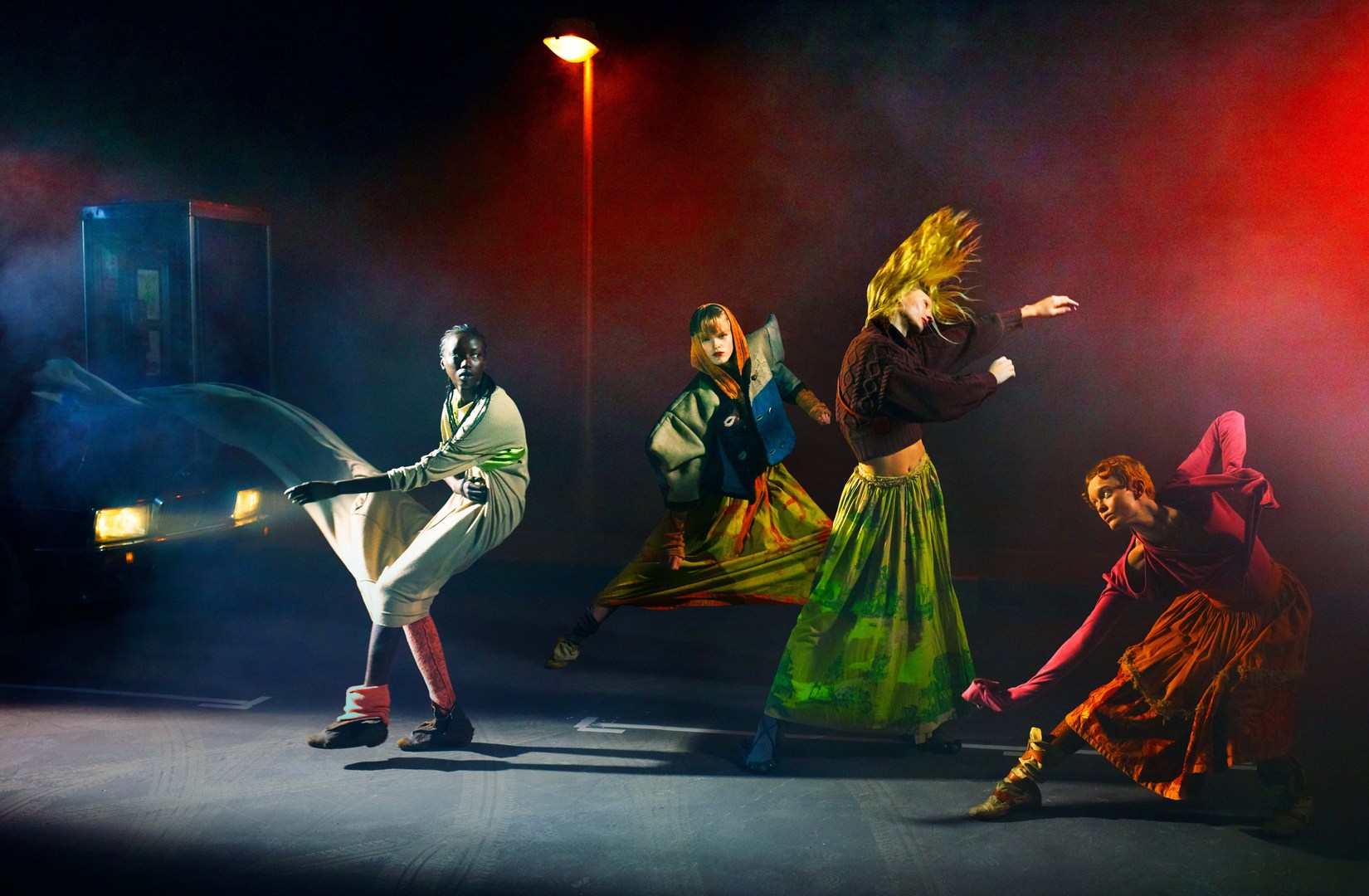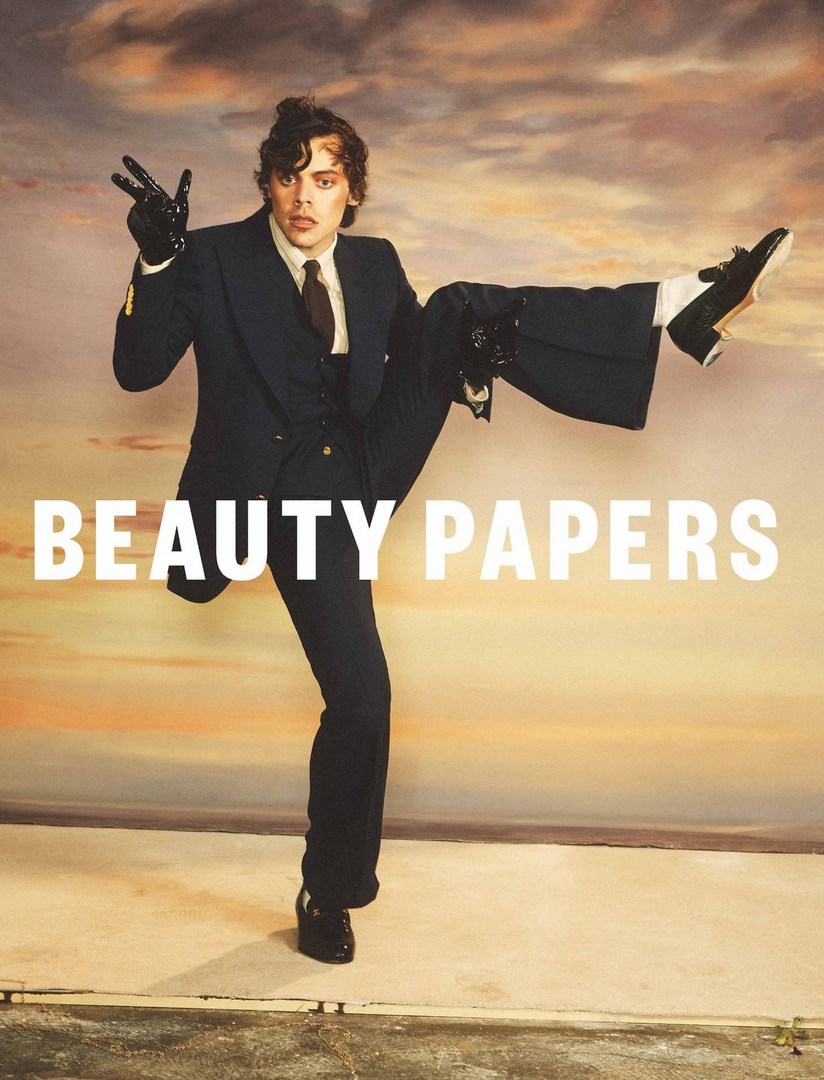The role of “movement director” wasn’t particularly well-known when Pat Boguslawski began forging a career, but he’s made a name for himself nonetheless. “Now, nobody comes to me on set asking, ‘What do you do? Why are you here,’” says the Poland-raised, Paris-based Boguslawski, who has a background in dance and modeling (and is signed to Elite London and Streeters) but shifted into movement direction in 2015. He credits choreographer Aaron Sillis as an early inspiration for pursuing this novel path, but Boguslawski has had other fashion heavyweights back him along the way. Notably, it was nudging from Alexander McQueen’s creative director Sarah Burton when he was cast as a model for the brand that formalized his practice when he was asked to show the other models some pointers. “I was very young, about 22, and I had no idea or basically anything about movement direction,” he recalls. Models.com contributor Nia Groce spoke with Boguslawski on his work as a movement director, regularly ticking off editorial, commercial, and runway clients, and creating “magical” imagery with the likes of John Galliano, Jean Paul Gaultier and British Vogue.
I read that you studied dancing back in Poland. Did you ever plan to pursue that professionally?
It was not in the plan at all. I remember the day when I was in art high school, in my room painting. And my friend came over and told me there was a new dance studio in my hometown and asked if I wanted to go with her and take some classes. I said no, and she was like, “I feel so shy and embarrassed to do it by myself. Just do it for me.”
So I took a few classes with her and then got a membership. I started going more and more and realized that this is something I really enjoy. It’s a different way of expressing myself. A year later, I was in London studying dance. I definitely hadn’t planned anything. It was spontaneous and something that just took over. It was like therapy for me.
So you were modeling for Alexander McQueen and Sarah Burton handpicked you herself to help the other models. From there, it seemed to click for you that you could actually turn this into a career. How did you officially transition?
When she asked me to help the models and basically present my walk to them, it was completely new and weird. I thought, “I don’t want anybody to start hating me, because I’m not that guy. I don’t want people to think that I’m better than them.” I just remember feeling super nervous but I did it. It really clicked when I was assisting another choreographer called Aaron Sillis. He was looking for some help because he couldn’t do the job and asked if I knew of any movement directors, and I was like, “What, this exists?” I didn’t really think about it before.
Then I joked, “I know an amazing movement director, he’s called Pat Boguslawski,” and he just started laughing. But then I [thought to myself], “Maybe I’m not joking… Sarah asked me to help the models and I could actually be good at it. Maybe this was a sign.” I was pretty lucky because by assisting him, I was around FKA twigs a lot, and the minute she found out I wanted to be a movement director, she asked me to come on set and help her and the models create choreography for a shoot. From that moment, everything started coming together.
“…I use a lot of my intuition and my mind, and I try to get the best out of people. It’s like a collaboration.”
Was it challenging getting more clients or convincing people that movement was as important to the visuals as all of the other parts?
The first two or three years were quite challenging because this position was not known. Nobody knew what was a movement director, what is movement direction? I thought to myself “This might be harder for me because this job doesn’t really exist.” But I felt I could turn it into a professional job…that people would be more interested because this was so unique. So the first two or three years were tricky, but I was still working and people were starting to reach out.
Also, the fact that I had been a model before created some context in fashion. Some people knew about me and they understood that as a model, and dancer, I can move and present myself in front of the camera. It was easy for me to get a couple of shoots. But it was still hard because people were like, “So, what are you actually going to be doing?” There were a lot of questions.
How would you describe your style of movement and the energy you bring to your work, and is there a signature look or feel to what you do?
It is kind of tricky to put it into words because it’s something that is coming out of me naturally. Definitely sexy. I use a lot of sexual energy in my work. Creative energy and sexual energy are basically the same. I think I need someone to look at my work and tell me what it is. I only know that I use a lot of my intuition and my mind, and I try to get the best out of people. It’s like a collaboration.
Do you always try to bring a certain level of energy with your moves, no matter the setting, or are they more tailored to the talent’s personality?
It’s not only about me. It’s also about the person that is in front of the camera. So I’m always trying to imagine how they would look the best, what I could create for them. It’s always a collaboration. I’m trying to mirror them and make sure they feel the most beautiful, confident, and creative and that they have the best day on set. That’s my mission every time.
But it’s always surprising because I never know what I’m going to create. It’s sort of improvisation. I might have an idea. But I never prep myself too much because I don’t want to be trapped around my own ideas. I want to go with the flow and make sure that I’m always present. The director, photographer, the talent—they can change the idea of the show or the client. And if I’m not [overly] prepared, I’m ready for anything.
How did you start working with Galliano and what has that been like being a part of the Maison Margiela productions?
To be honest, this is something that I manifested because I’ve been watching his shows for as long as I can remember. He was always my number one. When I started doing my job, that was my goal. I wanted to start doing movement direction in fashion and if I had to choose a person that I really wanted to work with, it was going to be John for sure. Maybe three years in, I had quite a good portfolio. I reached out to Alexis Roche, who is an artistic image director for Margiela and we met up and had coffee. He said, “Listen, I will show John your work, and then let’s see how it is.” I think it was the next day my agent said to me, “You have to return to Paris because John would love to meet you.” So that was the beginning. We clicked; he is such a genius. We’ve been working together for five years and it’s one of the most fun, amazing clients I have ever had in my career.
What does your process look like when you’re working on a project and does that differ between live runway shows versus an editorial, for example?
Every project looks completely different. Shows are very magical because you have an audience and you can see their reactions straight away; if they like it or hate it or if they don’t feel it. And I love that stress, that adrenaline and the fact that we have only a couple of hours to do rehearsals, and models need to interact with the clothes, music, and audience.
When you are creating a video, it’s great because you can frame it, give it good lighting and music and it’s going to look completely different from what you see in the studio. You can always repeat it and do it “one more time.” With a live show, once it’s done, it’s done. I love that.
With shows, when it comes to preparation, I have a couple of meetings with the designer then we have rehearsals. I have to speak to the models. I never have an assistant because I’m a control freak. My energy is quite unique on set. I need to be the one explaining to people what I really want to see so if I work on the show, I’m going to speak to 35 or 40 models by myself. Sometimes, I have to speak to them one by one, depending on the brief.
When it comes to films or shooting campaigns, we have a couple of meetings on Zoom. I can prepare some mood boards but I’m not really fond of mood boards. I love playing music for someone and being more inspired by a song or maybe I will show a clip. I can have one picture and that one can give me enough inspiration and mood instead of being like, “We have 40 pictures and this is what you’re going to be doing.” I don’t care what’s been done. I want to create something fresh.
How do you stay fresh in your field when it comes to finding or creating new moves and ways of expression?
I take a lot of free time. Balance is number one for me. I work enough and I don’t want to work all the time, every day. That is draining to me because I give a lot of energy stored away and I need to recharge myself. I might have a couple of days in the studio but then I want to have a couple of days off. I want to stay in my bubble, see my friends, watch some movies, listen to music, go to the gym. Coming back to my original level, my energy. That helps me to stay fresh.
I’m also sober. I don’t drink, I don’t smoke. I feel like this is important in my career and also as an example to young people working with me. If I’m a movement director, and I work with my body, I need to always stay in my best shape. And my best shape means an amazing diet, being sober, and working out. It’s basically looking after myself. And I think that is what really helps me to keep my feet on the ground.













